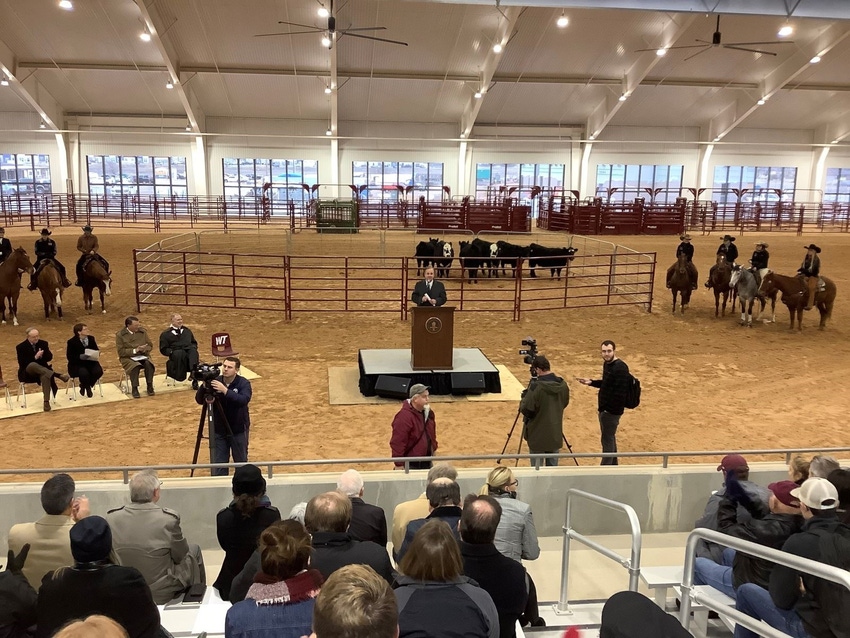Texas VERO program gains $5m commitment
Commitment will increase faculty for VERO's 2+2 veterinary education program
January 30, 2020

Officials from the Texas A&M University System (TAMUS) announced a $5 million commitment to the developing 2+2 veterinary program through the Texas A&M College of Veterinary Medicine & Biomedical Sciences’ (CVM) Veterinary Education, Research & Outreach (VERO) program on West Texas A&M University (WT) campus.
The additional funding from TAMUS will be used to increase faculty members from five to 23 for the VERO program, the announcement said. Current faculty members were secured with the support of a Legislative Appropriations Request by the Texas Education Agency.
The VERO 2+2 program is a continuation of initiatives led by TAMUS to support the agriculture industry and the young people of Texas. In 2019, TAMUS committed $90 million to the establishment of a 22,000 sq. ft. VERO facility to house the doctor of veterinary medicine (DVM) curriculum and externship programs for the new clinical rotations in the Texas Panhandle as well as the 2+2 program. The 2+2 program will allow Texas A&M veterinary students to elect to spend their first two years in Canyon, Texas, on the WT campus for increased exposure to large animal needs in rural communities, the announcement explained.
“Texas A&M’s 100-year-old veterinary program is an established, accredited route for students seeking their DVM degree,” WT president Walter V. Wendler said. “Paired with WT’s prime location for the cattle industry, with ample opportunities to work with large animals through [externships] and internships, is a recipe for a prosperous veterinary services industry in Texas. We are thrilled with the seamless collaboration between these two campuses and eager to be a part of educating Texas A&M veterinary students on WT’s campus.”
The first cohort of fourth-year veterinary students will begin clinical rotations at the Agricultural Sciences Complex on the WT campus starting this summer. The first cohort of up to 18 first-year veterinary students will begin their DVM education at the VERO in the fall of 2021.
Every year after that, two cohorts at one time will be cycling through the Canyon location before their third year at CVM in College Station, Texas, with the option of returning to Canyon for a portion of their fourth-year clinical rotations.
“Through our VERO program, Texas A&M, the CVM and WT are prioritizing the need for rural and food animal veterinarians -- needs that affect citizens of the Texas Panhandle and citizens in rural communities across the state,” said Dr. Eleanor M. Green, the Carl B. King dean of veterinary medicine at Texas A&M.
“Our VERO educational team, led by Dr. Dan Posey, is working to meet these needs by helping West Texas A&M gather and mentor regional students to help them produce the best veterinary school application possible. In just three-and-a-half years under Dr. Posey’s leadership, the number of successful veterinary college applications from West Texas A&M has tripled,” Green added. “The next step is to bring them back home to serve their hometowns in the Texas Panhandle region, and the 2+2 program will be a key part of this critical next step.”
Combining the power of the two campuses’ resources will expose students to unique, diverse learning opportunities in a large state with some underserved regions. Faculty of the VERO program encourage incoming students to engage locally and consider working in communities that have a greater need for a large-animal veterinarian, TAMUS said.
Approval by the Texas Higher Education Coordinating Board, the TAMUS Board of Regents and the American Veterinary Medical Assn.'s Council of Education to finalize the program is pending.
You May Also Like



